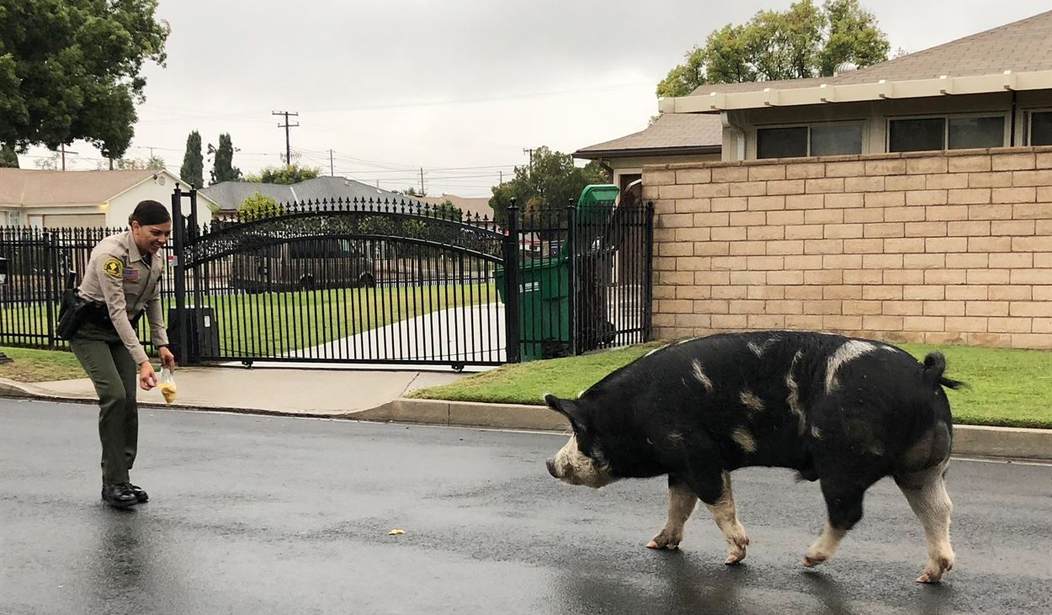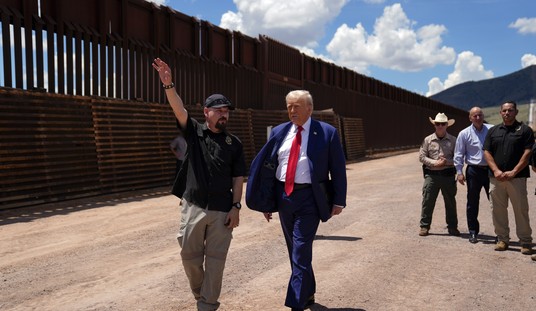There has been a lot of virtual ink spilled about the festering sore that is our southern border, and all of that is, of course, justified; but we should never forget that we also have a northern border, similarly poorly protected, and like the southern border, much of it is in some pretty wide-open spaces. Knowing this, we should not be surprised by the latest twist in the tale, namely that the United States is suffering an invasion of Canadian super-pigs. Yes, really.
In Canada, the wild pigs roaming Alberta, Saskatchewan and Manitoba pose a new threat. They are often crossbreeds that combine the survival skills of wild Eurasian boar with the size and high fertility of domestic swine to create a “super pig” that’s spreading out of control.
Ryan Brook, a professor at the University of Saskatchewan and one of Canada’s leading authorities on the problem, calls feral swine, “the most invasive animal on the planet” and “an ecological train wreck.”
Pigs are not native to North America. While they’ve roamed parts of the continent for centuries, Canada’s problem dates back only to the 1980s when it encouraged farmers to raise wild boar, Brook said. The market collapsed after peaking in 2001 and some frustrated farmers simply cut their fences, setting the animals free.
Movement of the swine across the border is no doubt carefully planned; swine are pretty smart, and their droves are well-organized, especially where operational intelligence is concerned; there is little chance of an individual pig squealing to the authorities. The motivations of the pigs are clear; the dangers of attempting the crossing, even at the cost of possibly pulling a hamstring, are no doubt worth the prospective reward of greener pastures. The real danger here is that they may attempt an alliance with some other well-known troublemakers, possibly coordinate with other bad actors south of the United States, and, indeed, even make contacts with some notorious critters at the highest levels of our own government.
What we do not yet know at this point is whether the pigs are making use of the numerous coyotes in the area to help with their illegal crossings. That could be expensive, requiring individual swine to go into hock to pay the dues. That would appear to violate one of the primary swine rules of finance: "Neither a boar-ower nor lender be."
The Canadian swine are breeding well past the point of no return:
Wild pigs already cause around $2.5 billion in damage to U.S. crops every year, mostly in southern states like Texas. And they can be aggressive toward humans. A woman in Texas was killed by wild pigs in 2019.
Eradication of wild pigs is no longer possible in Manitoba and Saskatchewan, Brook said. But the situation isn’t hopeless everywhere and a few U.S. states have eliminated them. The key, he said, is having a detection system that finds them early and fast, and then responding quickly.
That last part, the detection system, may be difficult. The Canadian swine are showing a good understanding of communications security; all of their messages are written in invisible oink. But there is reason to be hopeful, as our northern neighbors have already gained some experience in dealing with the super-swine; the best method is, apparently, to convert them to back-bacon. A well-known Canadian news program once discussed the issue in depth:
Stay safe out there.














Join the conversation as a VIP Member